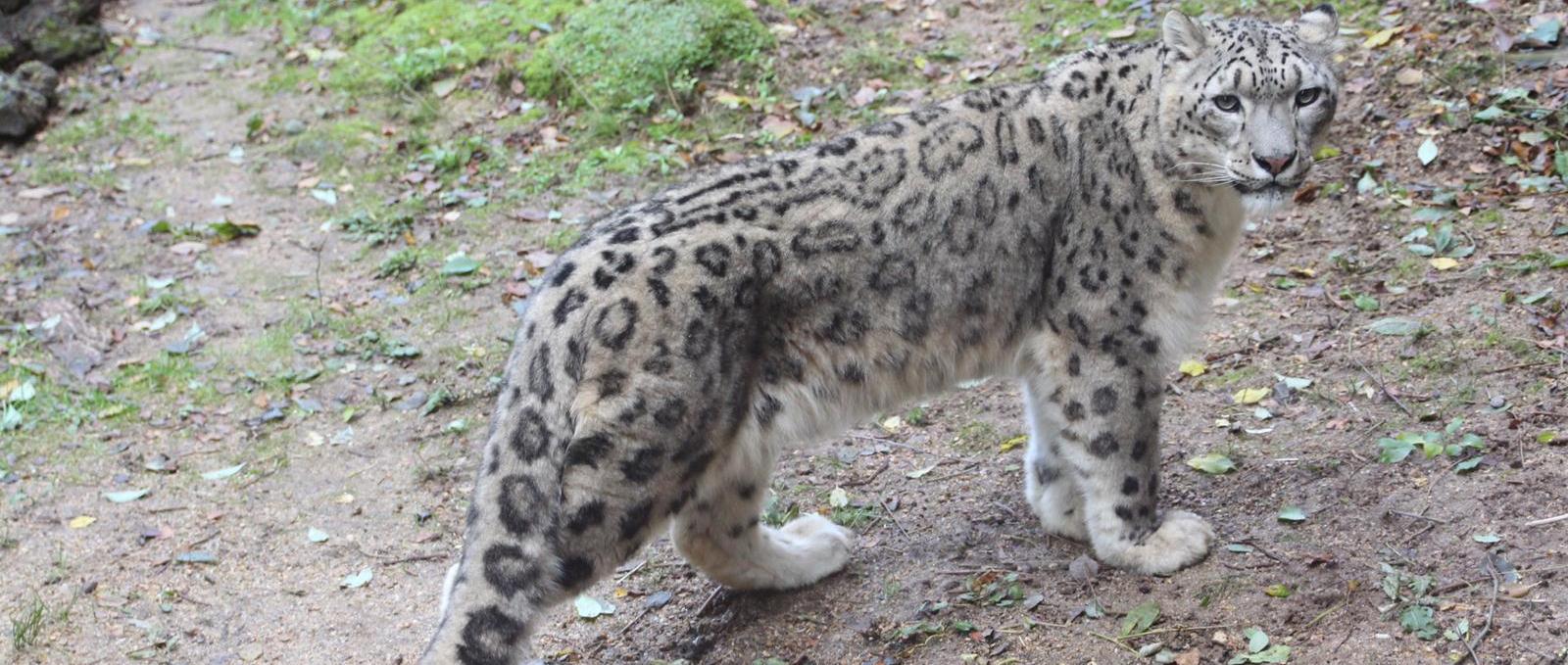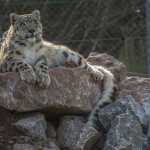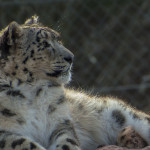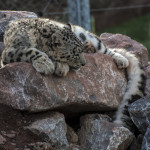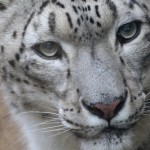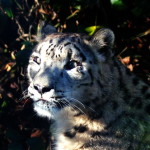Fact File
Characteristics
- Snow leopards vary widely in size, from 27 and 55kg, though some males can reach 75kg!
- Their long, fluffy tails can be used to wrap around themselves in the cold to keep them warm.
- Their eyes are an unusual pale green or light blue.
- They cannot roar, but do have a range of vocalisations from hisses and mews to growls and even wailing.
- They may eat grass and twigs, unlike many other cat species.
- They have been known to hunt in pairs.
Snow Leopard
Panthera uncia
Animals — Mammals — Carnivores — Felidae (cat family)
Snow Leopards are an elusive, solitary big cat native to the mountain ranges of central Asia. They are adapted well to their cold habitat, as they have thick fur, large fluffy paws, long thick tail and an enlarged nasal cavity. These keep them warm by insulating against the cold, or by warming the air they breathe through the nasal cavity.
Though snow leopards are solitary, the home ranges of males and females will overlap. Their home ranges must be larger if there is less prey available, but are smaller in areas with more food sources. They have fantastic camouflage, being grey, black and spotty to blend into the local rocks of their home. They also have high-set eyes so that they can peer over rocks without being seen easily.
Snow leopards are classed as “Endangered” by the IUCN. They come into increasing contact with humans and their livestock. Livestock are often allowed to roam by their owners, and can overgraze areas, reducing the numbers of the snow leopards’ usual prey. This leads to the snow leopards hunting livestock, which then leads to the owners killing snow leopards in revenge.
Habitat: Mountain steppes and forest scrub at high altitude.
Vital Statistics:
–Average weight: 1.15kg
–Average length: 1.15m
Life Expectancy:
In the wild up to: estimated to around 15 years
In captivity up to: 21 years
Diet: They are carnivores so eat meat. They eat a range of smaller animals, including deer, mice, wild boar and unfortunately livestock.
Distribution: High mountains within central Asia from China to Tibet, such as the himalayas.
Conservation: Safari Zoo supports the Snow Leopard Trust (SLT). This trust works in Chile, Mongolia, India, Pakistan, and Krygyzstan to protect snow leopards and to help local people. Snow leopards are affected by conflict with humans, but this is as poverty is very high. Herders can’t afford to lose livestock to the big cats, and can potentially earn extra money for their families by poaching.
The SLT, then, aims to educate and train the local people, as well as study the snow leopard. The STT vaccinates livestock and provides insurance for them, and trains people to make beautiful items out of their livestocks’ raw wool. This greatly increases financial stability for the locals and therefore reduces snow leopard killings. You can help with this enterprise by visiting http://www.snowleopard.org/shop/ and buying handmade items, or by donating to our charities within the zoo.

